
Sunny side up at Glory Days
Share
The endless summer at the Bondi Pavilion is made even more endless by the Cox Architecture-designed café Glory Days, an ode to the faraway colour and wonder of European summers. Bare feet and damp swimmers are essential, and get ready to feel as if you’re in a Slim Aarons photograph.
“We just wanted people to feel like they were on holidays, and then head into work in the CBD – the city beach lifestyle, that’s what it’s all about!” says Cox Architecture senior associate Samanatha Ellinson of the main takeaways the design team desired for the patrons of Glory Days.
Sydney-born Ellinson was thrilled to sink her teeth into designing Glory Days at the Bondi Pavilion. She sought to create an approachable space that really “speaks to the locals” and represents the antithesis of a “tourist trap”.
Glory Days is a part of larger, hotly anticipated and contentious restoration of the Bondi Pavilion. The community yearned for a meaningful refurbishment that still respects the historical integrity of the building, and Ellinson confirms the addition of art spaces and a cinema has already satisfied community wishes.
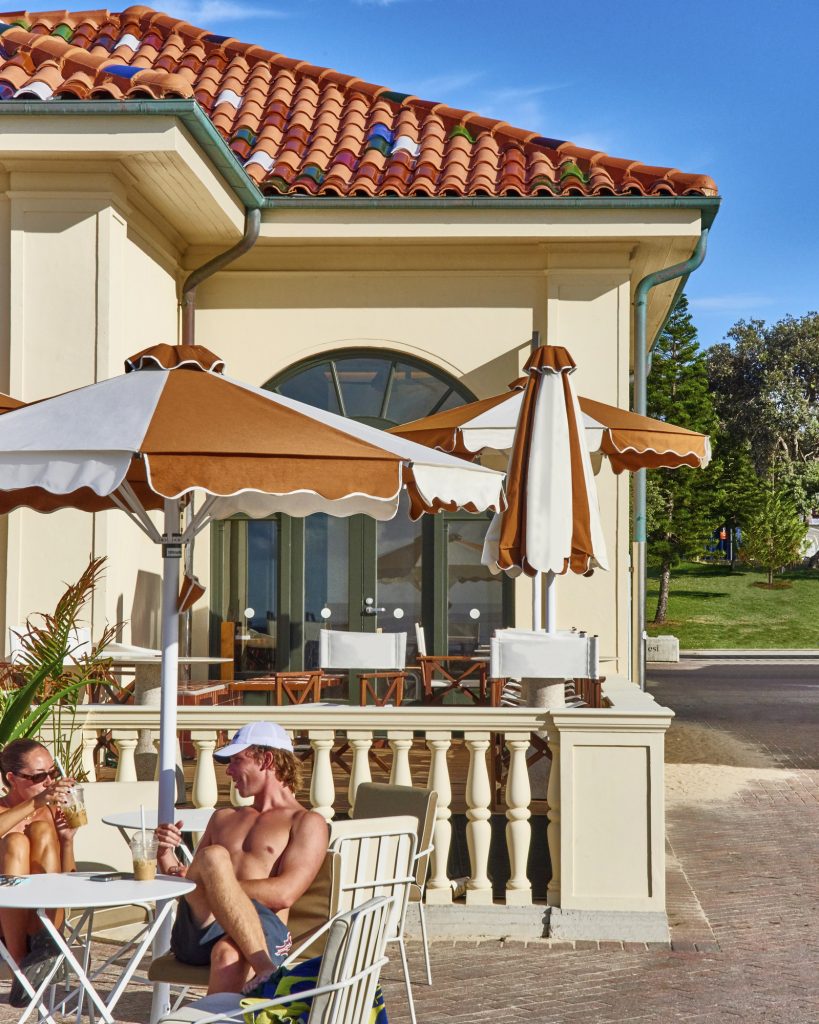
Ellinson’s background in designing boutique hospitality and residential design in Australia and Europe placed her in good stead to embrace the rewards and challenges of a home-grown project.
“It was just such a fun and iconic project in a great location,” says Ellinson.
Inspired by owner Aaron Crinis’ goal to offer a venue that would be treasured by the community, Ellinson says the design team was guided to design both a relaxing and sophisticated space where you feel compelled to lounge and linger, and never leave.
“We really just wanted people to feel comfortable – coming up from a swim and getting a coffee, sunbathing and hanging out,” says Ellinson.
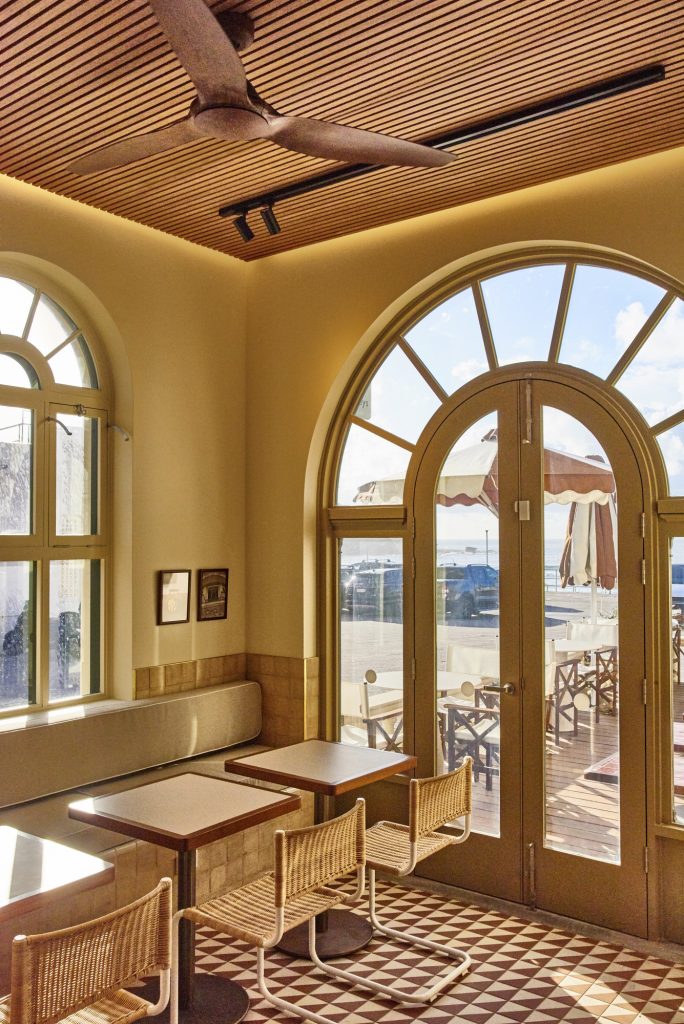
And it’s clear this has been achieved, as Ellinson confirms the café is constantly buzzing with a palpable community-centric feeling. This is a café where nearly everyone knows each other, and you tend to spot the same people each morning.
“It’s being used exactly how we intended it to be used, and that is the greatest thing. Bondi in the mornings between 5am and 7am is mental, there are people everywhere, but it’s still so stunning!” she says.
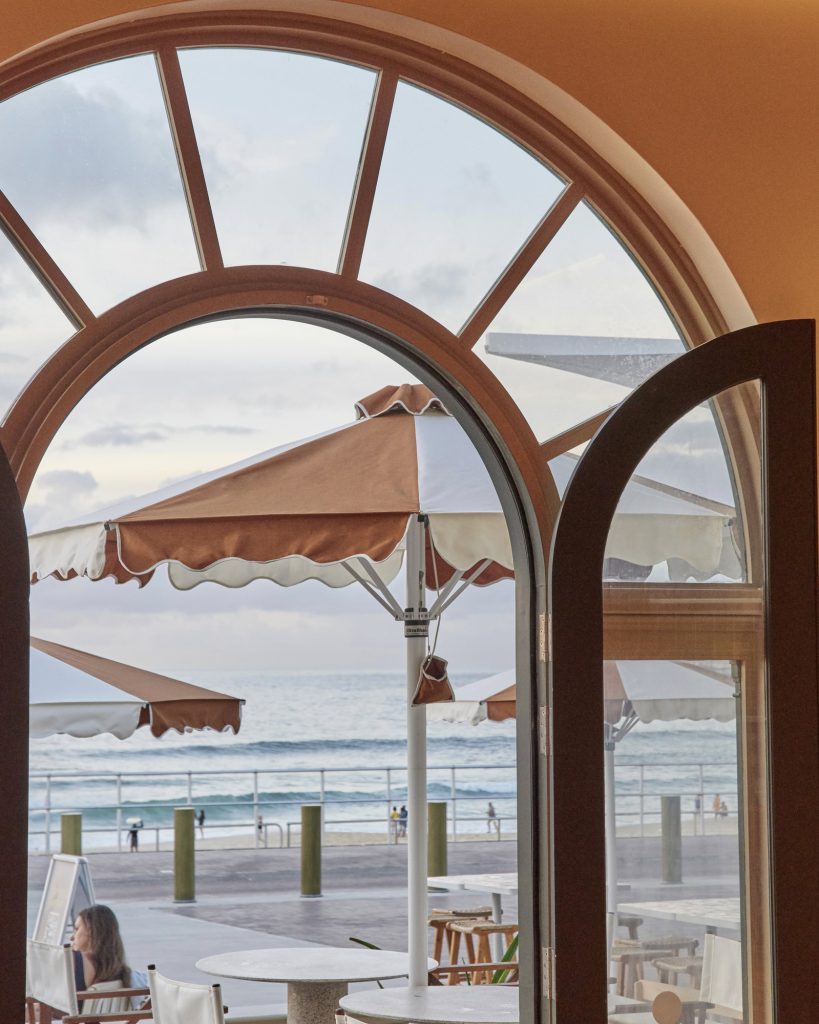
Glory Days is located at the northern end of the pavilion colonnade, and specialises in a drinking and dining café experience. The design seamlessly fits in with the tones and hues of the jaw-dropping Bondi Beach, however Ellinson explains that lockdown-induced daydreaming also served as inspiration for design.
“It was a time when everyone was dreaming of European holidays while stuck in lockdown – and this is reflected in the Mediterranean-revival pastiche palette,” says Ellinson. The palette particularly nods to Jørn Utzon’s pink stone summer house in Mallorca.
The team was eager to keep the design natural and effortless so that patrons could feel compelled to traipse through the café barefoot.
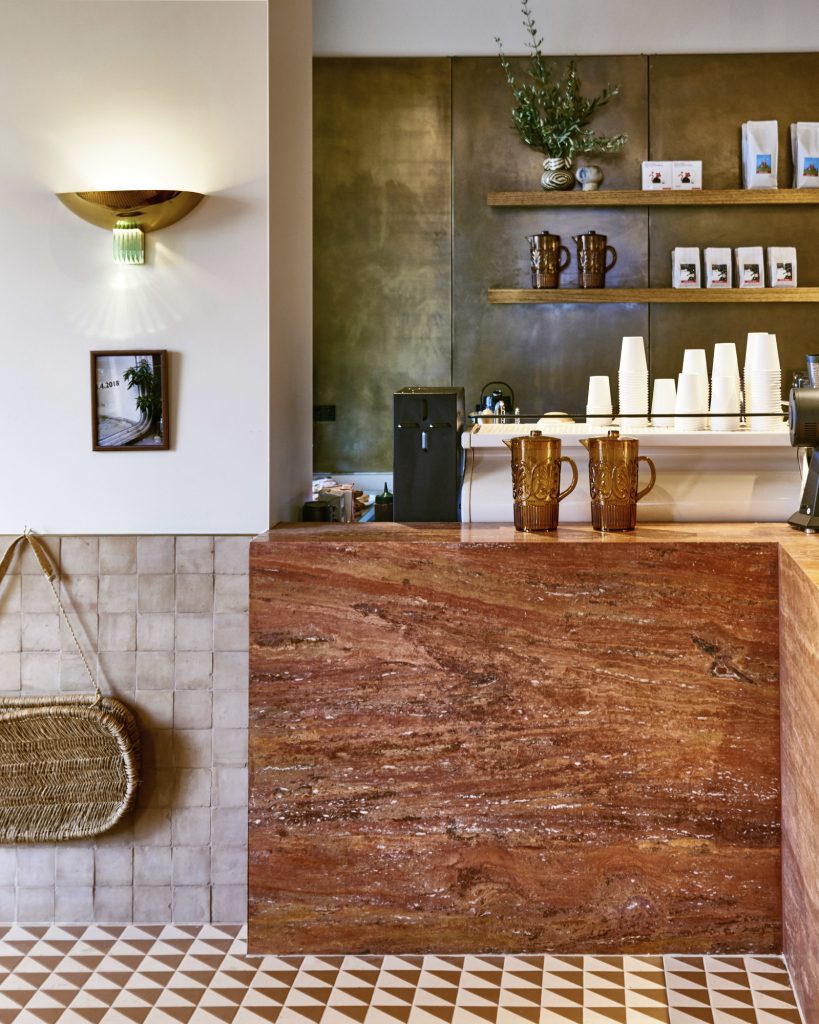
“We didn’t want to try too hard and create an over-designed and slick space,” says Ellinson.
A sense of comfort and warmth is achieved by clay tiles and burnt red and soft green tones, however a red travertine bar imbues the space with a hint of sophistication – an ideal effect, as Crinis is hoping Glory Days will one day function as a restaurant and cocktail bar.
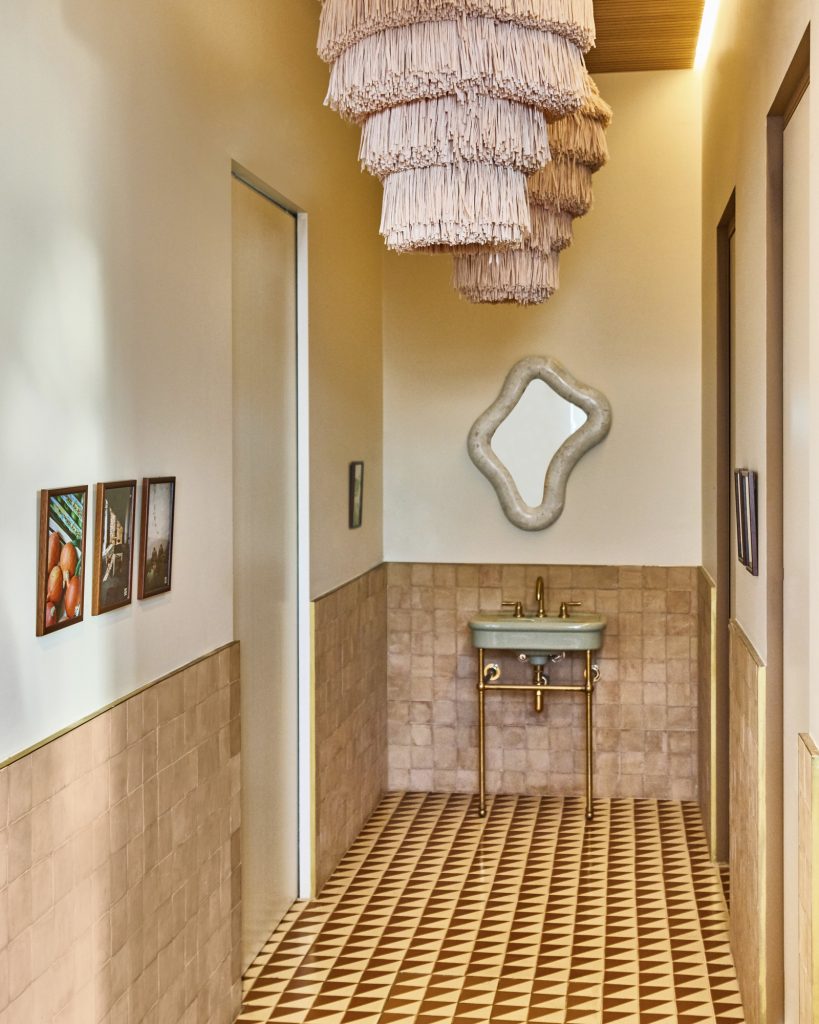
The project came up against the challenges of limited space, as the interior of the café is quite small. Crinis wanted a takeaway window in one of the old arched windows, which made accessibility planning difficult, particularly due to the building’s Heritage listing.
“The biggest challenge was maximising the internal space against the restrictions. We had to alter the overarching accessibility strategy of a Heritage refurbishment, which was tricky, but we got there!” says Ellinson.
As Glory Days’ outdoor seating space is larger than the interior, Ellinson thanked the blessing of the Sydney climate. If the café was not subject to the almost eternally pleasant weather of Sydney, it would have been a shame, as perpetual rain and cold would force patrons to squeeze into the small interior space.
However, patrons can soak up the gorgeous rays while perched on sandy stone tables and teak and linen chairs.
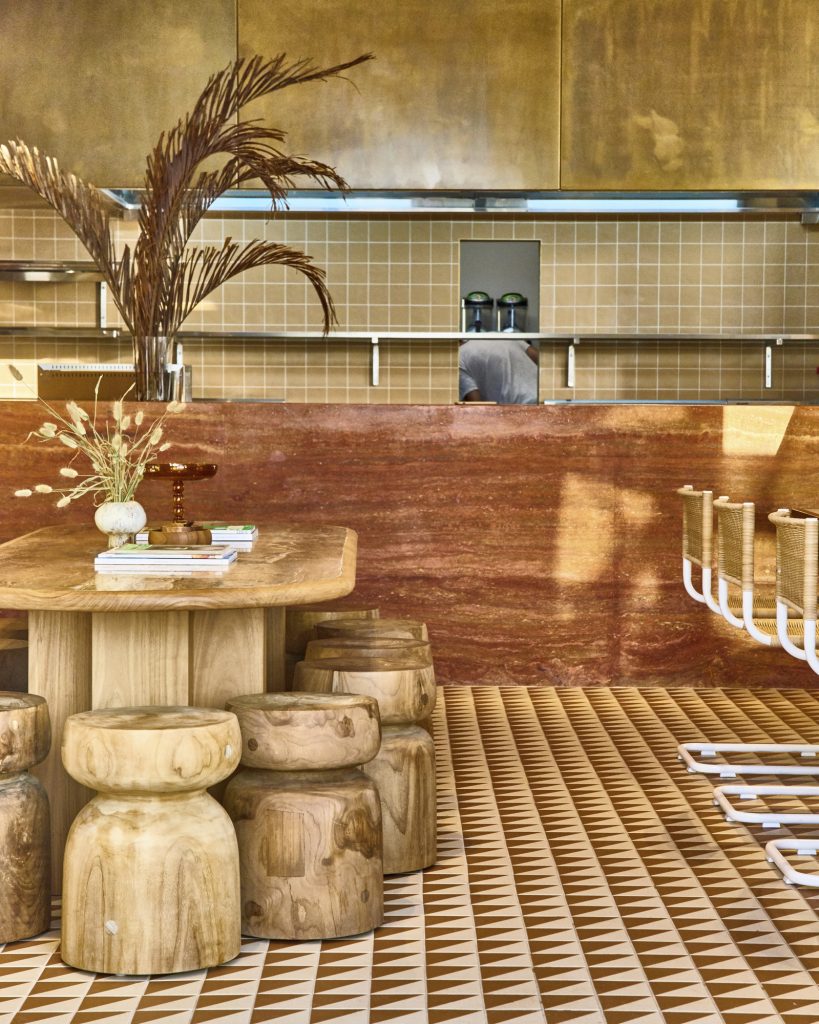
Restrictions on what the design could do in terms of exterior signage and branding also had the potential to become an obstacle, however the team saw this as an opportunity to feature the now recognisable burnt red and white-scalloped umbrellas.
This retro throwback speaks to the team and Crinis’ shared desire for the decor to exude a nostalgic mid-century modern feeling. Local and second-hand furniture was sourced from platforms such as 1stdibs, and local artists and designers chipped in a variety of pieces.
“The relationship between us and Aaron was very synergistic – we had similar tastes and styles and appreciation for certain designs,” says Ellinson.
The team was conscious that Bondi has experienced a major demographic shift, and that the stereotypes of a very glitzy and glamorous city-beach lifestyle are not always accurate.
Despite its reputation as a “tourist trap”, Bondi boasts a heartwarming and inviting identity, and the Pavilion in particular has tremendous community respect as a Heritage building. Ellinson speaks of how the design aims to honour this coastal comfort.
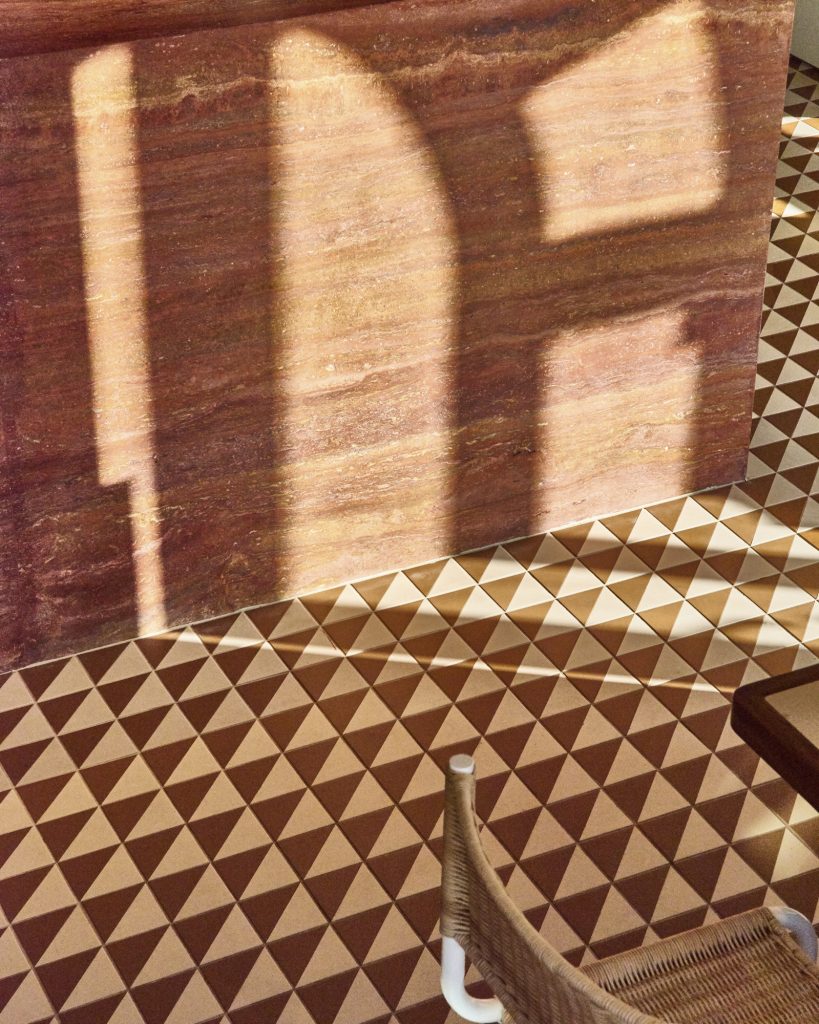
“We initially thought of developing something urban, something that you would find in Melbourne’s Flinders Lane. But then we realised it’s still Bondi Beach,” laughs Ellinson.
The vision then emerged – salute the European holidays everyone was longing for and hero the unique city-beach Bondi lifestyle that sees people swimming in the ocean as a pre-work ritual before travelling a mere 10 minutes into the concrete jungle.
“Even in winter, people are walking on soft sand in the morning, swimming and surfing, and then working in a city – there’s nowhere in the world quite like it,” says Ellinson.
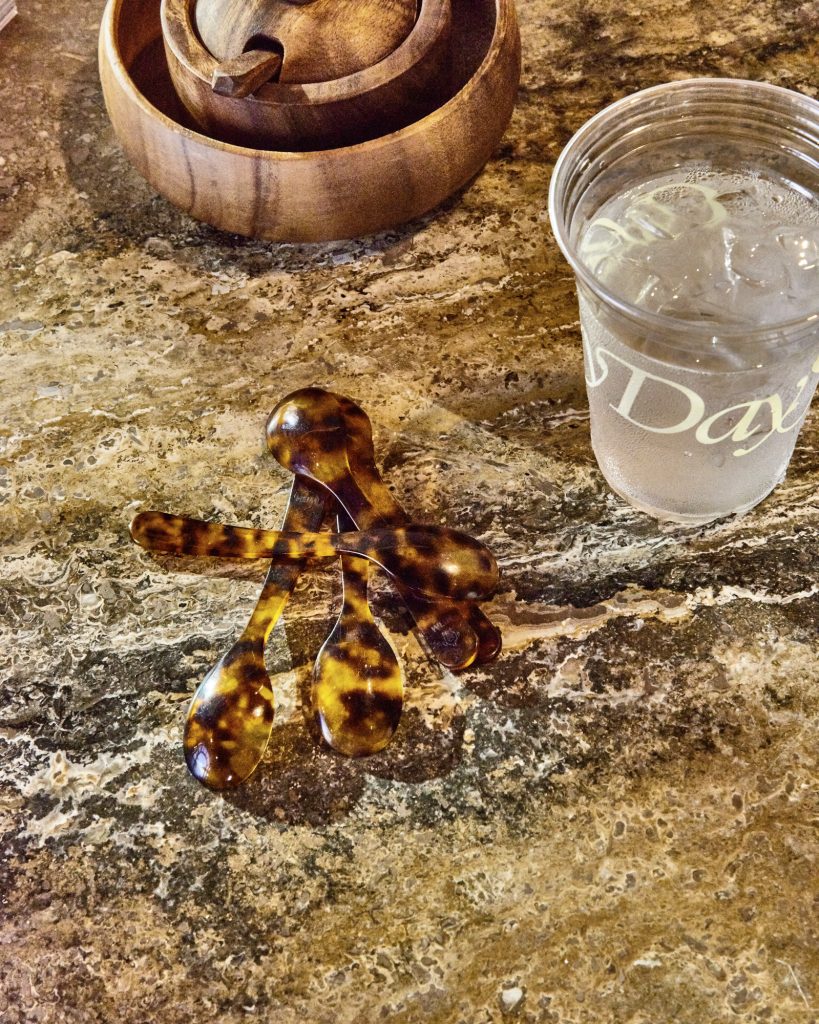
In reflecting this marriage of city sophistication with coastal charm in the design of Glory Days, Ellinson says the team used refined and premier quality material in an effortless way.
“It was almost the way we didn’t detail materials such as marble, clay tile banquettes and ceramics,” says Ellinson.
“I didn’t consider it a beach bar when we were designing it, and maybe that’s why it ended up the way it has!”
The café has glimmers of subtle intimacy in features such as bold brass, glass pieces imported from Italy and vignettes of beloved Australian-born photographer Adrian Mesko on his European holidays.
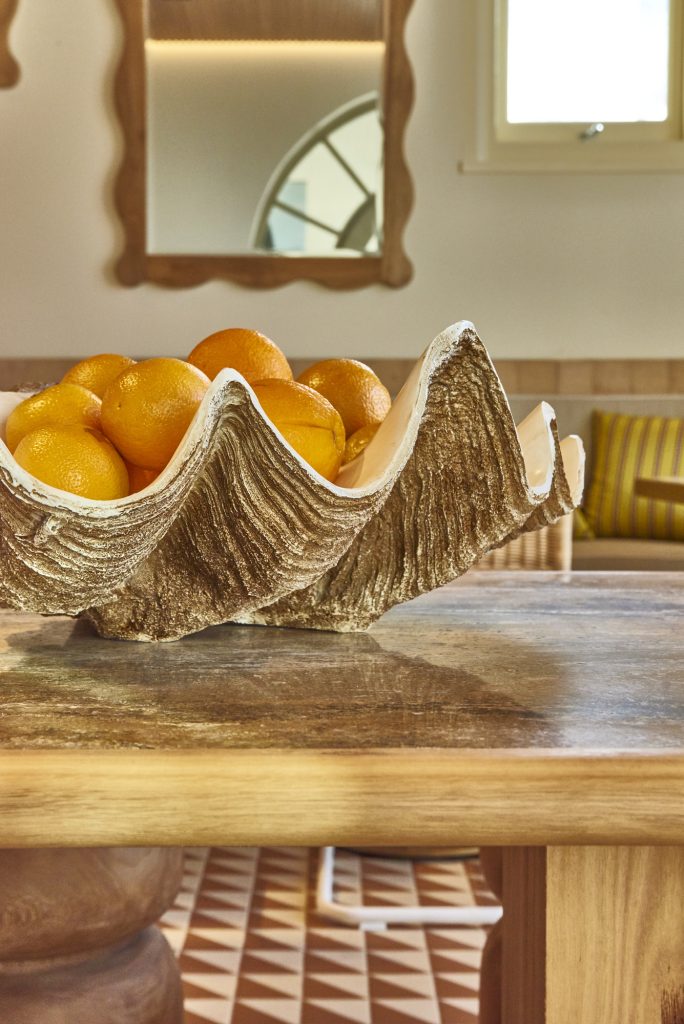
Patrons encounter moments of comfort and delight by timber ceilings, woven dining chairs and patinated cove lighting, imbuing the coastal space with an elevated feeling.
“I’ve heard people say, ‘Oh, this doesn’t feel like a café,’ and that’s actually a great thing to hear.” says Ellinson.
The project’s designated sustainability department steered the project on the right course towards mindful design, although Ellinson addressed how there is now such a willing embrace of sustainability in design.
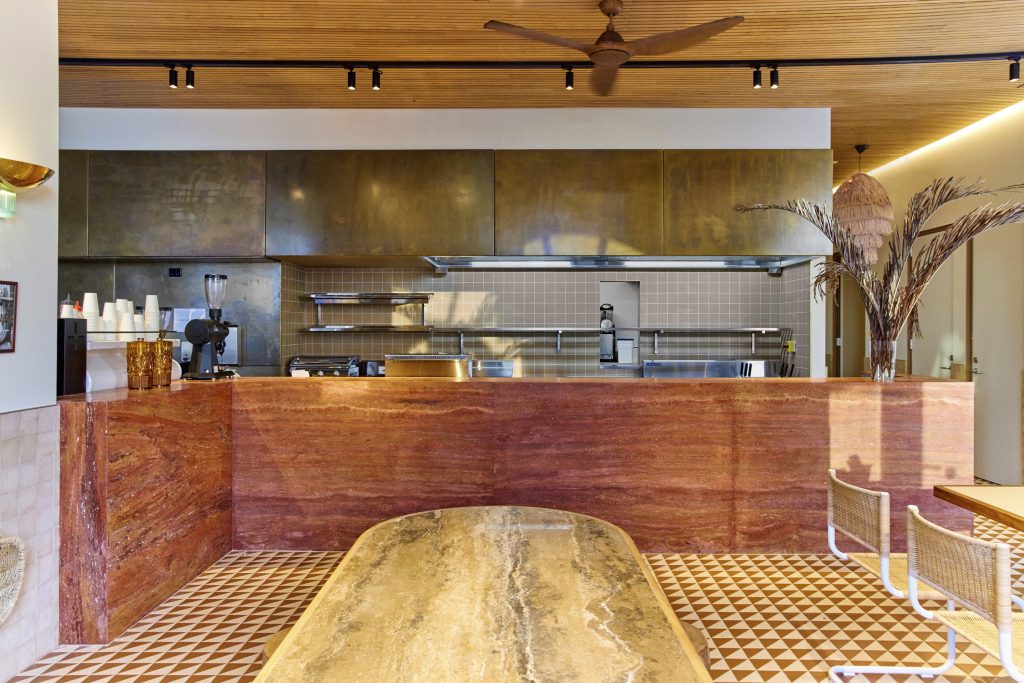
In addition to sourcing furniture from second-hand outlets and local designers, the project used zero plastic. It also boasts an efficient air strategy, using ceiling fans to avoid an over-zealous reliance on air conditioning.
Glory Days demonstrates what an artful combination of nostalgia, tradition and pastiche can produce in design, and how one venue has the potential to speak to the heart of a community.
“Glory Days was definitely a missing feature of Bondi Beach,” concludes Ellinson.
Photography by Adrian Mesko.
This article originally appeared in last year’s inside 117. Click here to get your hands on a copy or subscribe for future issues.
















